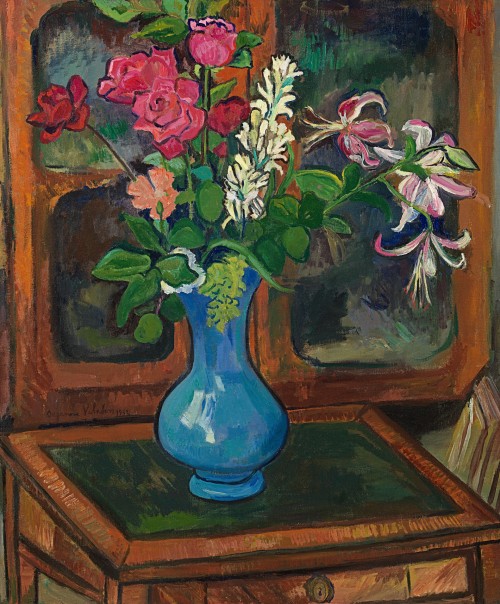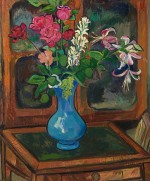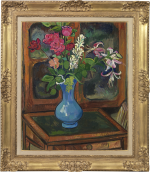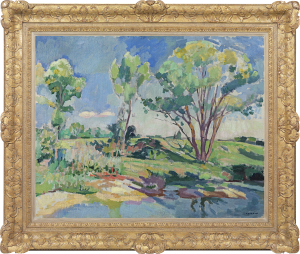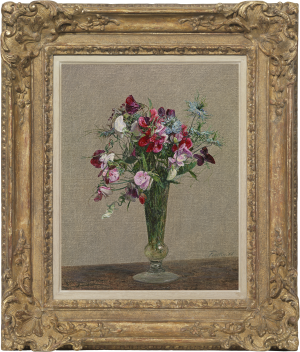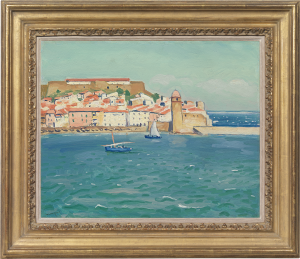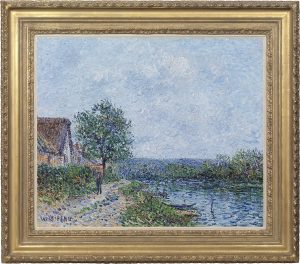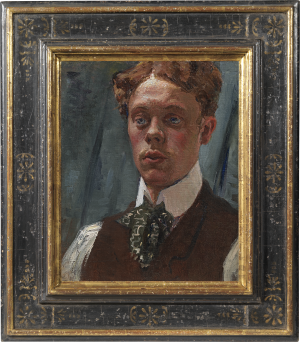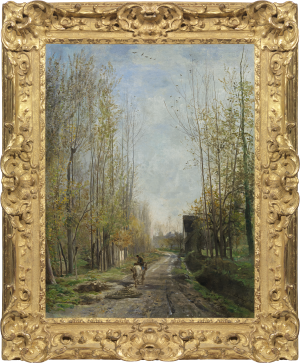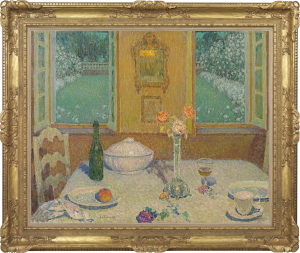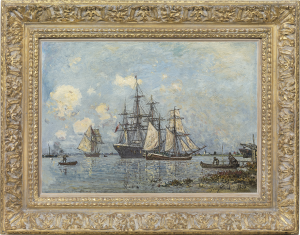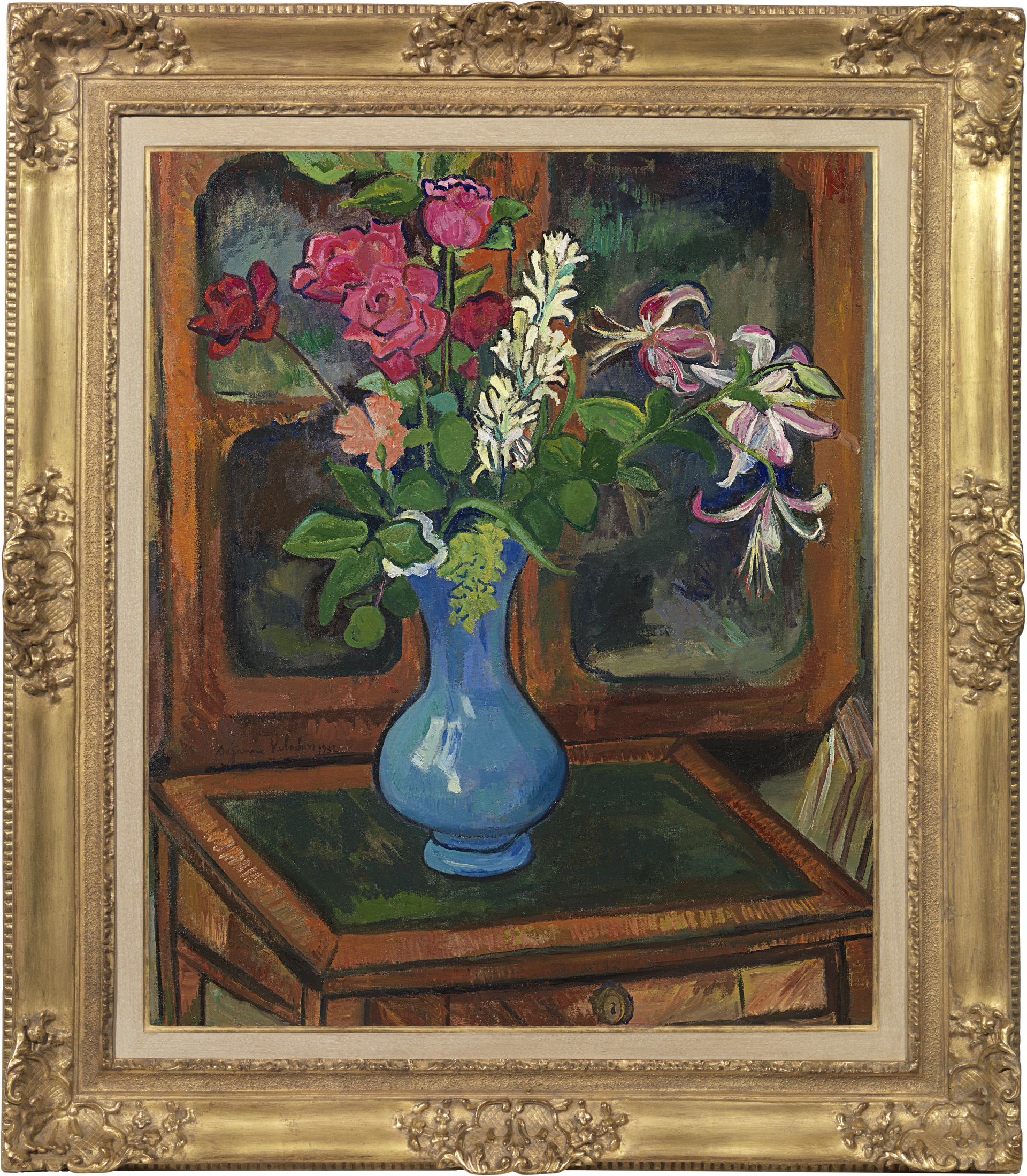Suzanne Valadon
Bouquet de fleurs sur une petite table
Oil on canvas: 25.5 x 21.3 (in) / 64.8 x 54 (cm)
Signed and dated centre left: Suzanne Valadon / 1932
This artwork is for sale.
Please contact us on: +44 (0)20 7493 3939.
Email us
SUZANNE VALADON
Bessines-sur-Gartempe 1865 - 1938 Paris
Ref: BZ 172
Bouquet de fleurs sur une petite table
Signed and dated centre left: Suzanne Valadon / 1932
Oil on canvas: 25½ x 21¼ in / 64.8 x 54 cm
Frame Size: 33½ x 29 in / 85.1 x 73.7 cm
Provenance:
Christie’s Paris, 20th May 2009, lot 131;
private collection, Paris
Exhibited:
Tokyo, Seiji Togo Memorial Sompo Japan Nipponka Museum of Art (and touring), Maurice Utrillo and Suzanne Valadon: 150th Anniversary of the Birth of Suzanne Valadon, 2015, no.54, illus. in colour
Literature:
Paul Pétridès, L’oeuvre complet de Suzanne Valadon, Paris 1971, p.343, no.P441; pl. P441
The authenticity of this work has been confirmed by the Comité Utrillo-Valadon, inv. no.7693. It will be included in the forthcoming catalogue raisonné of the work of Suzanne Valadon
Born poor and illegitimate, Suzanne Valadon enjoyed an artistic career which saw her end her days as the owner of a château in the Auvergne. As a teenager, she was a circus tightrope walker before becoming a model for Renoir, Zandomeneghi and Forain. Fired with the desire to succeed as an artist, Valadon carefully observed their working methods. Taught printmaking by Degas, she began painting full time upon her marriage to the stockbroker Paul Mousis in 1896.
Valadon proudly forged her own style, largely independent of her male artistic mentors. She painted confident nudes, sleekly bounded by black lines; bold landscapes and spare, forceful still lifes. In the 1920s and 30s she received increasing commercial success and critical approbation. Valadon was represented by the dealer Bernheim-Jeune from 1924 and there were retrospectives of her work in 1929 and 1932. In 1937 the Musée du Luxembourg bought three major paintings and many drawings.
In this painting Valadon chooses a bouquet of fragrant flowers. Deep red roses, tuberose and lilies mingle their heady scents. Bold outlines emphasize the dense, rounded complexity of the roses, the spiky forms of the unfolding tuberose and the lilies which twist and turn against the shadowed background of the cabinet. The sleek blue curves of the vase contrast with the warm brown tones of the furniture. Valadon ignores realistic perspective, tilting the table top towards the picture plane and making our perception of the room deliberately restricted. She responds powerfully to the exuberance of the natural world and makes us see the flowers through her eyes.
SUZANNE VALADON
Bessines-sur-Gartempe 1865 – 1938 Paris
Suzanne Valadon was born in Bessines-sur-Gartempe, near Limoges, the illegitimate daughter of a housemaid. She had jobs as a milliner and waitress before joining the circus, but a fall put an end to her career as a tightrope walker. From the age of fifteen the beautiful Valadon modelled for artists in Montmartre, particularly those who frequented the Lapin Agile. She modelled for Puvis de Chavannes, Renoir, Zandomeneghi, Forain and others, shrewdly observing their working methods. Having taught herself to draw as a child, Valadon became an artist, producing her first signed and dated work, a pastel Self-portrait (Musée du Pompidou, Paris), in 1883. That year she gave birth to Maurice Utrillo (1883-1955), the future painter of Montmartre, whose father was the Spanish painter Miguel Utrillo (1862-1934). Maurice was left with his grandmother while Suzanne went back to work as a model.
Valadon was encouraged by Renoir and Degas, who bought three of her drawings in 1894 and taught her to etch; she produced about thirty prints. Degas also introduced her to influential collectors and dealers, including Paul Durand-Ruel and Ambroise Vollard. In 1893 she painted the composer Erik Satie; their brief, passionate affair prompted a marriage proposal, but Valadon turned Satie down. Three years later Suzanne’s marriage to the Montmartre stockbroker Paul Mousis gave her the financial stability to paint full time.
Valadon proudly forged her own style, largely independent of her male artistic mentors. She painted confident nudes, sleekly bounded by black lines; bold landscapes and spare, powerful still lifes. The large, allegorical composition The joy of life reflects her happiness with the painter André Utter (1886-1948), nineteen years her junior, who became her lover in 1909 and her husband in 1914, after her divorce from Mousis. Valadon’s later paintings, such as the Blue room, 1923 (Musée du Pompidou, Paris) are characterized by a richer use of colour and intricate, decorative backgrounds.
In 1924 a contract with Bernheim-Jeune revived Valadon’s finances, enabling her to buy the Château de Saint-Bernard in the Auvergne. There were retrospectives of her work in 1929 and 1932; in 1937 the Musée de Luxembourg bought three major paintings and many drawings. Valadon died in Paris in 1938.

